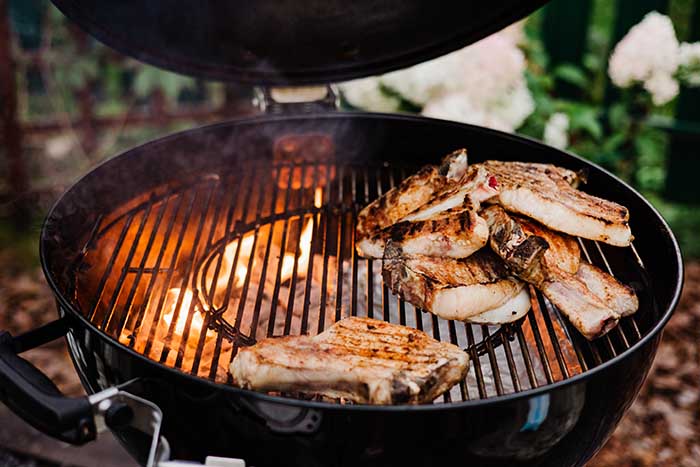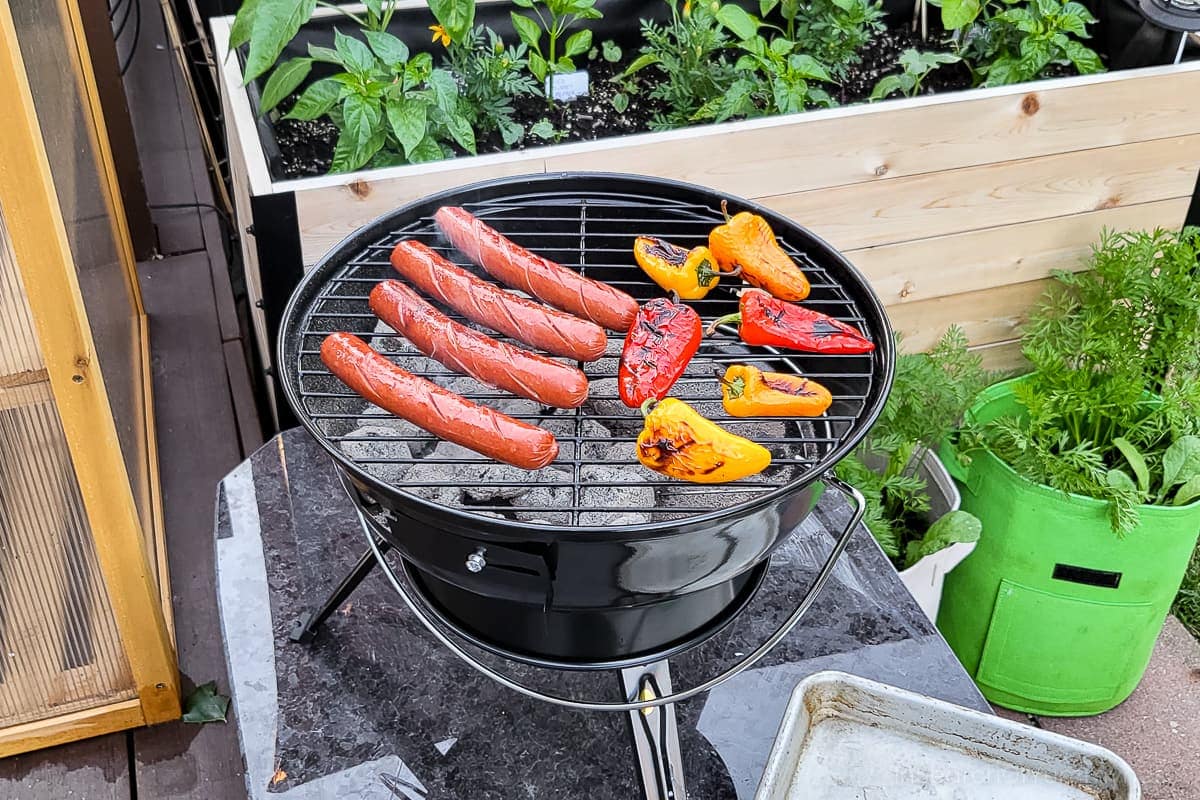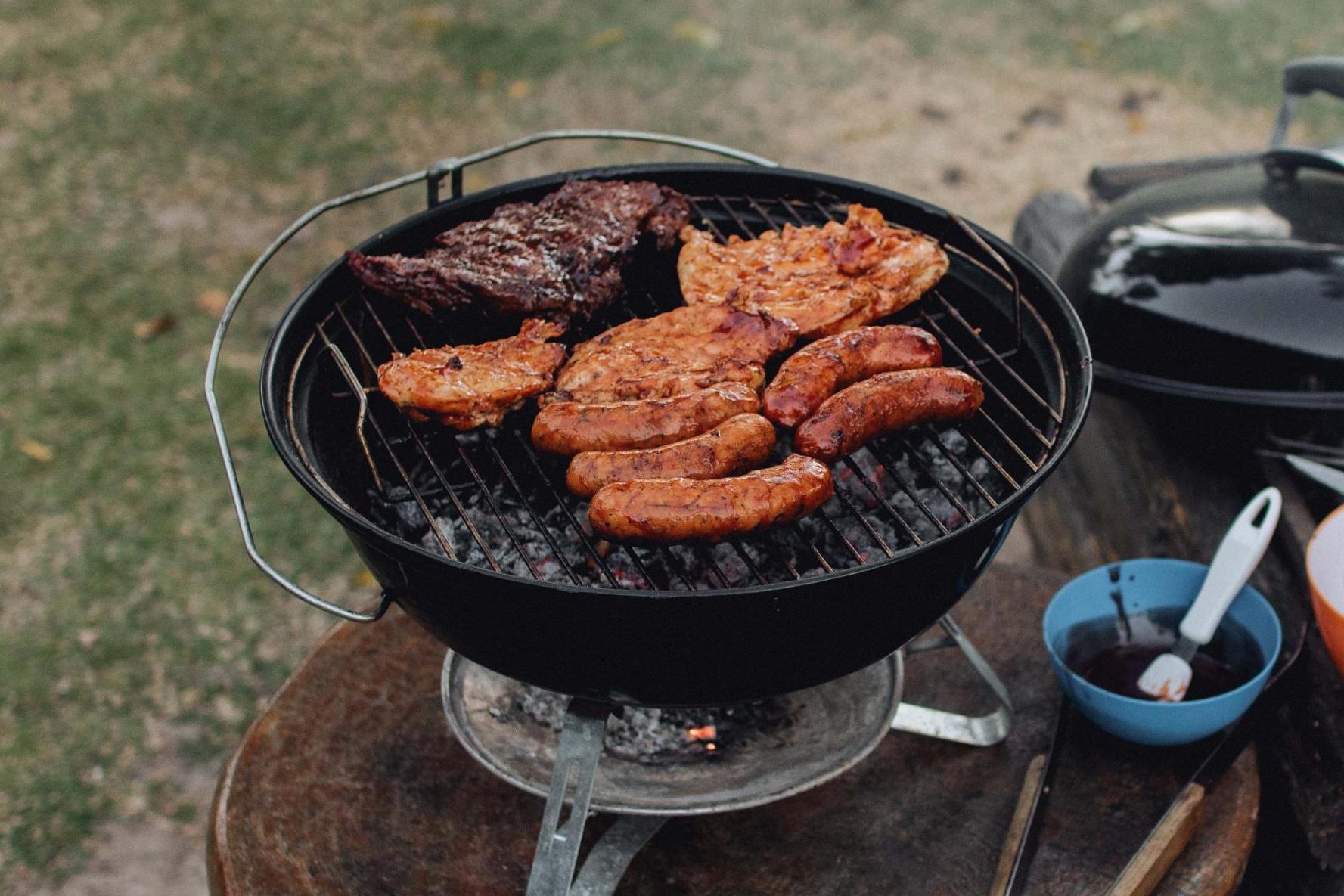Mastering the Art of Grilling: How to Cook on a Charcoal Grill
Written By James Morgan
Mastering the Art of Grilling: How to Cook on a Charcoal Grill
There's nothing quite like the smoky flavor that comes from cooking on a charcoal grill. The process itself evokes a sense of tradition and ritual, appealing to both seasoned grill masters and those new to the art of barbecue. In this article, we'll explore exactly how to cook on a charcoal grill, providing detailed steps, essential tools, and expert tips to ensure your next barbecue is a resounding success.

The Basics of Charcoal Grilling
The first step to mastering how to cook on a charcoal grill is understanding its fundamental principles. Charcoal grills, unlike their gas counterparts, rely on burning charcoal briquettes or lump charcoal. The key to achieving a perfect barbecue lies in control. Unlike gas grills, where temperature adjustment is as simple as turning a knob, charcoal grilling requires finesse in managing airflow and heat distribution. By knowing how to properly set up and ignite your charcoal grill, you lay the foundation for a successful grilling session.
Choosing Your Charcoal Grill
Your grilling journey begins with selecting the right charcoal grill. Whether you opt for a versatile Barrel Charcoal Grill or a compact Kettle 22-Inch Charcoal Grill, the type of grill you choose will impact your cooking experience. While barrel grills offer larger cooking surfaces and the ability to cook indirectly, kettle grills are known for their portability and ease of use. Whichever you choose, ensure it comes with adjustable vents for better temperature control.
Igniting Your Charcoal
With your grill selected, the next step is ignition. Begin by arranging the charcoal in a pyramid formation within the grill's base. Using a charcoal chimney starter can significantly simplify this process, allowing you to ignite the charcoal evenly without relying on lighter fluid, which can impart unwanted flavors. Once the charcoal is lit and covered with a thin layer of ash, it's time to spread the coals to create different heat zones within the grill. By pushing coals to one side for direct cooking and leaving the other side for indirect cooking, you can better control the cooking process.
For a more detailed guide on starting your charcoal grill, you can check out this WikiHow article.

Essential Tools for Charcoal Grilling
While mastering how to cook on a charcoal grill, having the right tools at your disposal is crucial. A quality knife set, such as this knife set, ensures precise preparation of meats and vegetables. Long-handled tongs, a sturdy spatula, and a grill brush for cleaning are obvious requirements. For those looking to elevate their grilling game, consider investing in a cast-iron griddle or a meat thermometer to ensure perfect grilling results every time.

Preparing Your Food
Meat Selection and Marination
Grilling aficionados know that not all meats are created equal. The cut, fat content, and preparation method will affect the final outcome. Begin by selecting high-quality cuts of your favorite meats. Marination is key; a good marinade not only adds flavor but also tenderizes the meat. Let your meats marinate for a few hours or overnight, allowing the flavors to penetrate deeply. Whether you prefer a tangy citrus-based marinade for chicken or a savory garlic and herb rub for beef, this step lays the groundwork for a delicious barbecue.
Vegetable and Side Preparation
Don't overlook the vegetables and sides. Grilled vegetables add a healthy and delicious component to your meal. Opt for hearty vegetables like bell peppers, zucchini, and corn, which withstand high heat well. Simply coat them with olive oil and sprinkle with your favorite seasoning before placing them on the grill. Grilled corn on the cob, basted with butter and herbs, is a crowd-pleaser that complements any meat dish.

Cooking Techniques and Tips
Direct vs. Indirect Heat
Understanding the difference between direct and indirect heat is crucial to mastering how to cook on a charcoal grill. Direct heat is ideal for smaller, quick-cooking items like burgers, hot dogs, and thin steaks. Cooking directly over the coals sears the exterior while locking in juices. Indirect heat, achieved by placing food away from the coals, is better suited for larger cuts like whole chickens, ribs, and roasts. This method allows the meat to cook slowly and evenly, preventing burnt exteriors and undercooked interiors.
For more detailed cooking tips, check out our guide on direct and indirect heat.
Mastering Temperature Control
Temperature control is one of the most challenging aspects of charcoal grilling. Unlike gas grills, which maintain temperature with ease, charcoal requires constant vigilance. The vents on your grill play a crucial role in regulating airflow and temperature. Opening the vents increases oxygen flow, raising the temperature, while closing them dampens the heat. A good practice is to monitor the grill temperature with a built-in thermometer or an external one. For precise temperature management, investing in a dual-probe meat thermometer can be invaluable, allowing you to monitor both the grill's internal temperature and the meat's internal temperature simultaneously.
Master temperature control by visiting our detailed guide on grill temperature management.
The Art of Smoke
One of the unique advantages of charcoal grilling is its ability to infuse food with smoky flavors. Adding hardwood chunks or chips like hickory, mesquite, or applewood to your charcoal introduces a new dimension of taste. Soak the wood in water for about 30 minutes before adding it to the coals to prevent quick burning. As the wood slowly smolders, it imparts its smoky essence to the food, enhancing flavors and elevating your grilling experience.
Perfecting the Grilling Process
Burger and Steak Grilling
Grilling the perfect burger or steak is an art form. For burgers, begin with ground meat that has an appropriate fat content, around 80/20. Form patties without overworking the meat and create a small indent in the center to prevent puffing up during cooking. Grill over direct heat, searing both sides for a crispy exterior, then move to indirect heat to finish cooking if thicker patties are involved. For steaks, choose cuts like ribeye, strip loin, or filet mignon. Ensure the grill is preheated to a high temperature, searing the steak for a few minutes on each side to create a beautiful crust, followed by indirect cooking to achieve desired doneness.
For more on burger and steak grilling, check out this burger grilling tips.
Cooking Poultry and Fish
Grilling poultry and fish requires attention to detail. Chicken, whether whole or in pieces, benefits from being cooked over indirect heat to prevent burning the skin while ensuring the inside is fully cooked. Using a meat thermometer ensures chicken reaches an internal temperature of 165F. Fish, being more delicate, is best grilled with a grill basket or foil packet. Coating fish in olive oil and seasoning helps prevent sticking. Cook over medium-high heat until opaque and flaky, turning carefully with a spatula. Cedar plank grilling is another method that imparts a wonderful smoky flavor to fish like salmon, halibut, and trout.
Grilling Vegetables and Fruits
Grilled vegetables are a delightful addition to any barbecue. Skewering vegetables or using a grill basket prevents smaller pieces from falling through the grates. Vegetables with a high water content and sturdy structure grill beautifully, such as bell peppers, zucchini, and eggplant. Fruit, though less common on the grill, brings a caramelized sweetness that's irresistible. Grilling peaches, pineapple, and even watermelon creates a delightful contrast of flavors, perfect when served as a side or dessert.
Cleaning and Maintaining Your Charcoal Grill
To ensure your grill lasts for years and remains in top condition, cleaning and maintenance are paramount. After each grilling session, clean the grates with a stiff wire brush to remove any food residue. Periodic deep cleaning is essential, removing ash and debris from the grill's bottom. A stainless steel cleaner helps maintain the exterior, while a cutting board conditioner keeps your wooden boards in prime condition. Regular maintenance ensures your grill performs optimally every time.
Conclusion
Grilling on a charcoal grill is both an art and a science. By understanding the intricacies of how to cook on a charcoal grill, selecting the right tools and techniques, and maintaining proper care, you can create memorable meals that delight family and friends. Whether you're grilling juicy burgers, succulent steaks, or perfectly caramelized veggies, the flavors you achieve on a charcoal grill are unmatched. With practice and passion, anyone can master the art of charcoal grilling.
As an Amazon Associate, I earn from qualifying purchases.
For more grilling tips and recipes, visit Grilling4All.



